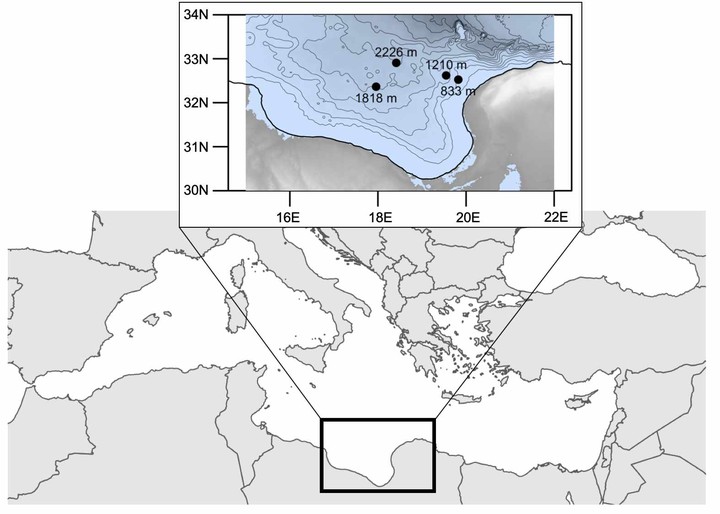Patterns in extracellular enzyme activity and microbial diversity in deep-sea Mediterranean sediments

Abstract
Deep-sea sediments are populated by diverse microbial communities that derive their nutritional requirements from the degradation of organic matter. Extracellular hydrolytic enzymes play a key role in the survival of microbes by enabling them to access and degrade complex organic compounds that are found in seafloor sediments. Despite their importance, extracellular enzymatic activity is poorly characterized at water depths greater than a few hundred meters where physical properties, such as pressure and temperature, create a unique environment for influencing enzyme behavior. Here, we investigated microbial communities and enzyme activities in surface sediment collected at four sampling stations in the central Mediterranean Sea at water depths ranging from 800 to 2200 m. Fluorometric assays revealed that extracellular hydrolytic activity varied according to substrate type and water depth which suggests that the distributions of these enzymes within this basin are not homogenous. Furthermore, enzyme activities indicated substantial demand for phosphomonoesters and proteins, with measurable but much lower demand for polysaccharides. Barcoded amplicon sequencing of bacterial and archaeal SSU genes revealed that microbial communities varied across sampling stations and some groups displayed water-depth related trends. Our results demonstrate that heterotrophic capabilities of microbes in deep-sea Mediterranean sediments can differ substantially even within the same region.